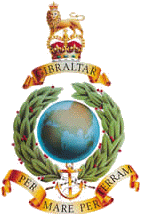The Royal Marines
The Royal Marines were a major driving force in the removal of the Argentine forces during the Falklands War and one of the most prominent sections of the Task Force, alongside the Parachute Regiment.
Viewed by many as the key factor in the removal of the Argentine troops from the Falkland Islands, the Royal Marines played a central role in the conflict, along with the members of the Parachute Regiment. After landing at San Carlos Bay, the Royal Marines went on to fight at Mount Kent, Mount Harriet and also Two Sisters prior to their successful arrival into Port Stanley.

Initially created to play an infantry role for the Royal Navy, the Royal Marines, or a forerunner that would turn into the Marines, began in October 1664. They were originally called the Duke of York and Albany’s Maritime Regiment of Foot and that named was later changed to the Admiral’s Regiment. The year 1672 saw the word ‘Marines’ first appear in record books and, in 1755, His Majesty’s Marine Forces were put under Admiralty control and were stationed at Plymouth, Portsmouth and Chatham. George III renamed them the Royal Marines in 1802 and this newly christened unit played a major part in, amongst others, the Napoleonic Wars, the Crimean War and the Boxer Rebellion in China. During World War I, the Royal Marines played a part at the Gallipoli landings as well as in a number of Western Front battles, with the unit winning five of the highest medals for bravery during the War, the Victoria Cross. The year 1923 saw more change for the Royal Marines when the artillery and infantry parts were merged to become the Corps of Royal Marines.
Moving on to World War II, the Royal Marines developed the commando role for which they are now well-known. Merging with the Army commandos in 1943, the Royal Marines commandos became known as the Special Service Brigade. In total, nine of these Royal Marines Commandos units were made over the course of World War II, and each unit carried between 40 and 48 men, fighting in conflicts including D-Day and the capture of Antwerp.
Following World War II, the Army Commando units were disbanded in 1946, with the Royal Marines taking on the overall fulfilment of the commando role for future conflicts. Since that time, they have served in Malaya, Northern Ireland and Suez. More recently, they have been stationed in Sierra Leone, Afghanistan and Iraq.
See also: The Parachute Regiment
MLA Citation/Reference
"The Royal Marines". HistoryLearning.com. 2024. Web.
